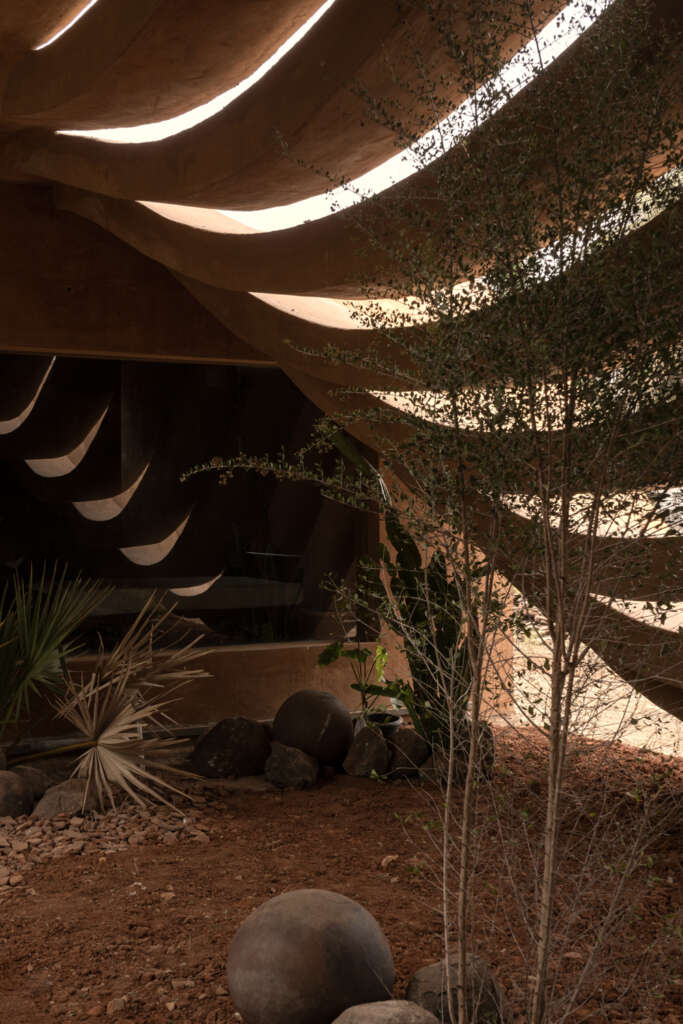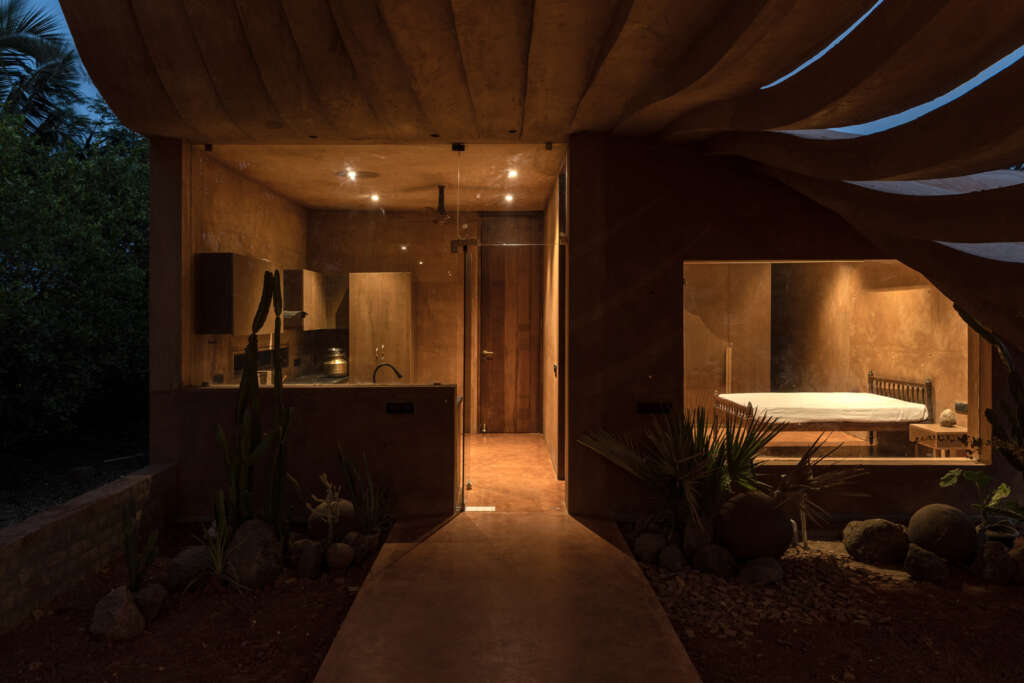
Vaazh House
Architect: Vy architecture studio
Location: Chennai, India
Type: House
Year: 2024
Photographs: Syam Sreeylam
Client Brief
The following description is courtesy of the architects. The client, Mr. Manimaran, is a progeny of the city. His heart dreamt of the same dream W.B. Yeats expressed when he wrote, “I will arise and go now, and go to Innisfree, and a small cabin build there, of clay and wattles made.” Mr Manimaran, his wife, and three children have lived in Chennai all their lives. “I’m a workaholic, spending countless hours at the office. But when I come to this village, I feel a deep sense of peace.” “We love the rain,” he said with a smile, “and our children love climbing.” After the pandemic, he secured a remote job to build a home in Vedanthangal and escape from the chaos. The house was to be the antithesis of artificially cooled air and the plastic walls of corporate life; a home rooted in climate and place. A home to relax and unwind.





Concept Note
Birds fly and make homes in lands far away. Vedanthangal is a chosen land for migratory birds. The untouched vegetation and aquatic plants maintain the bird sanctuary in Vedanthangal as one of the country’s oldest protected regions. The client’s story is that of a man caged in the walls of a city. Setting him free in this chosen land was our role as architects.
A home in a vulnerable ecosystem had to be a breathing edifice, born of the earth, slowly ebbing into the soil. A living home for living beings. With reference to the indigenous construction practices of mud architecture and courtyard houses, our design approach was grounded in history and equally modern for the city dwellers to adapt. The shell had to allow the gaze to penetrate the surfaces, bear witness of age and history on its skin and withhold the openness of the client in its layout.





Design Process
Amid a cluster of family-owned houses, the north-facing rectangular site belongs to a borderless neighbourhood with the only true boundary being the thinnai—a raised, covered veranda intrinsic to Tamil households. This space, where the family chit-chats with neighbours and feed dogs, serves as the heart of belonging.

Introducing the Wandering Series:
Architecture Guides for Architecture Lovers
Explore all our guides at avontuura.com/shop
The plan is zoned into three. The communal spaces- thinnai, living room and courtyard, and the more private kitchen and bedrooms are linearly arranged such that every space is visually connected. At the core of the house is a courtyard. A wall curves through the volume of the courtyard and shelters the west from harsh sun. On the east, the curve extends to the roof, forming an open space to bask in the morning sun.
The perforations in the curve let the sun cast patterns on the earth-like oxide floor and shower rain into the courtyard. The river rocks in the courtyard are mnemonic objects, reminiscent of the river flowing nearby. The curve, more than a sculptural element, is a play wall to climb up to the roof and lie back, watching clouds drift by. The curve connects the ground and the roof, creating a three-dimensional recreational area. The courtyard invites not just the family, but also birds, insects, dogs, and cats, turning the home into a sanctuary for all. Here, the home celebrates the climate’s veracities—bare feet on cool, damp soil, raindrops from the open roof, stargazing at a clear blue sky—breathing life into the narrative.




Project Details
- Architect: Vy architecture studio
- Lead Architect: Venkatesh
- Team: Yogalakshmi, Srinivasan, Ramesh Kumar
- Website: vyarchitecturestudio.com
- Photographer: SYAM




